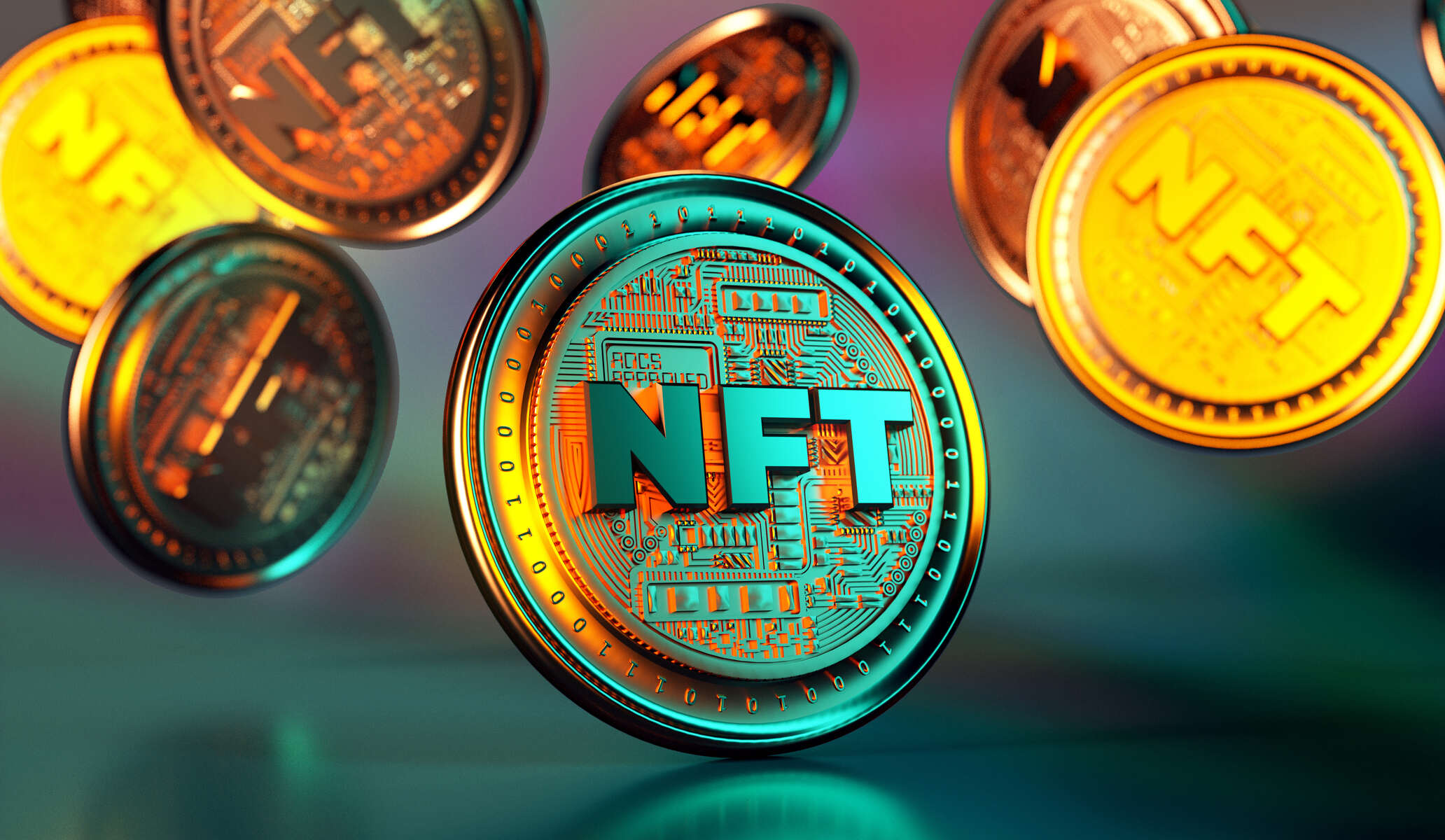Introduction
The rise of blockchain technology in recent years has paved the way for countless applications and possibilities across various industries. From cryptocurrencies to supply chain management, blockchain has garnered attention and generated excitement for its potential to revolutionize how we conduct transactions and share information.
However, as blockchain continues to gain traction, concerns about its environmental impact have emerged. The energy consumption associated with blockchain operations has become a topic of debate and scrutiny. Critics argue that the energy usage required for blockchain transactions is excessive and unsustainable.
With the growing awareness of climate change and the urgent need to transition to sustainable energy sources, it is crucial to evaluate the energy consumption of blockchain technology and explore potential solutions to address its environmental impact.
In this article, we will delve into the energy consumption problem of blockchain, examine the different consensus mechanisms, such as Proof of Work (PoW) and Proof of Stake (PoS), that underpin blockchain networks, and discuss the environmental concerns associated with blockchain’s carbon footprint.
We will also explore the role of renewable energy in sustainable blockchain operations and highlight potential solutions and innovations aimed at mitigating the energy consumption of blockchain technology.
By understanding the challenges and exploring strategies for reducing energy usage, we can work towards a more sustainable future for the blockchain industry without compromising its potential benefits and applications.
What is Blockchain?
Blockchain is a decentralized digital ledger that records transactions across multiple computers or nodes. It provides a transparent and immutable record of these transactions, making it secure and resistant to tampering.
At its core, blockchain operates on the principle of distributed consensus, where participants in the network collectively validate and verify transactions. These transactions are grouped into blocks, which are chronologically linked together, creating a chain of blocks – hence the name “blockchain.”
The decentralized nature of blockchain ensures that there is no central authority controlling the network, reducing the risk of fraud and manipulation. Instead, transactions are validated through a consensus algorithm that ensures agreement among network participants.
One of the key features of blockchain is its transparency. Once a transaction is recorded on the blockchain, it becomes visible to all participants in the network. This transparency enhances trust and accountability as anyone can verify the transaction history, reducing the need for intermediaries.
Blockchain technology has gained widespread recognition for its application in cryptocurrencies, such as Bitcoin and Ethereum. However, its potential extends far beyond digital currencies. Blockchain can be utilized to streamline processes and increase efficiency in various industries, including supply chain management, healthcare, finance, and voting systems.
With its decentralized, transparent, and secure nature, blockchain has the potential to revolutionize traditional systems by reducing costs, eliminating intermediaries, and increasing trust and security. However, it is important to consider the energy consumption associated with blockchain operations and explore ways to make it more sustainable.
The Energy Consumption Problem
The energy consumption of blockchain technology has become a pressing concern as its popularity and usage continue to grow. The process of adding new blocks to the blockchain, known as mining, requires significant computational power and, consequently, a substantial amount of energy.
One of the primary factors contributing to the energy consumption problem is the consensus mechanism used in blockchain networks. The most widely known and utilized consensus mechanism is Proof of Work (PoW), which requires miners to solve complex mathematical puzzles to add new blocks to the blockchain. This process demands substantial computational power and energy consumption.
As the blockchain network grows, so does the difficulty of these puzzles, leading to a continuous increase in energy requirements. In fact, according to some estimates, the energy consumption of popular cryptocurrencies like Bitcoin can surpass the energy usage of entire countries.
The energy consumed by blockchain networks not only has financial implications but also raises environmental concerns. The majority of energy used in blockchain mining comes from non-renewable sources, such as fossil fuels, contributing to carbon emissions and exacerbating climate change.
Moreover, the energy-intensive nature of blockchain operations creates a barrier to entry for individuals and organizations who do not have access to cheap and abundant energy resources. This can potentially limit participation and decentralization within the blockchain network.
While the energy consumption problem is a significant challenge, it is essential to recognize that not all blockchains operate with the same energy requirements. The emergence of alternative consensus mechanisms, such as Proof of Stake (PoS), aims to reduce energy consumption by eliminating the need for computational puzzles.
By shifting from energy-intensive PoW to PoS, blockchain networks can achieve consensus through stakeholder participation. Instead of miners, network validators are chosen based on the number of coins they hold, reducing the computational requirements and energy consumption.
Addressing the energy consumption problem of blockchain technology is crucial for its long-term sustainability and acceptance. By exploring alternative consensus mechanisms and adopting sustainable approaches, the blockchain industry can mitigate its environmental impact and pave the way for a greener future.
Proof of Work (PoW) vs. Proof of Stake (PoS)
Proof of Work (PoW) and Proof of Stake (PoS) are two prominent consensus mechanisms used in blockchain networks, each with its own approach to validating transactions and adding new blocks to the blockchain. Understanding the differences between these mechanisms is crucial in evaluating their energy consumption and environmental impact.
In PoW, miners compete to solve complex mathematical puzzles, requiring high computational power and energy consumption. The first miner to solve the puzzle is rewarded with newly minted cryptocurrency and the right to add a new block to the blockchain. This process ensures network security and consensus, but it comes at the cost of substantial energy usage.
On the other hand, PoS eliminates the need for miners to solve computational puzzles. Instead, validators are chosen to create new blocks based on the number of coins they hold and “stake” in the network. Validators are incentivized to act honestly, as they risk losing their staked coins if they validate fraudulent transactions or attempt to manipulate the network. The energy consumption of PoS is significantly lower compared to PoW, as it does not require constant computational power.
In PoW, the energy consumption is directly proportional to the computational power used to solve puzzles, while in PoS, the energy consumption is primarily related to network maintenance and communication.
While PoS offers a more energy-efficient consensus mechanism, it is not without its challenges. One concern is the potential for centralization, as validators with a large number of coins have a higher chance of being chosen as block creators. This concentration of power goes against the decentralized nature of blockchain.
However, various PoS implementations, such as Delegated Proof of Stake (DPoS), aim to address this issue by allowing token holders to delegate their staking power to trusted individuals or entities. This ensures a more distributed network and increases participation, reducing the risk of centralization.
Both PoW and PoS have their strengths and drawbacks, and their suitability depends on the specific use case and goals of the blockchain network. As the industry evolves, new consensus mechanisms are being explored and developed, aiming to strike a balance between energy efficiency, decentralization, and security.
Understanding the differences between PoW and PoS is crucial for making informed decisions and designing sustainable blockchain networks that minimize energy consumption while maintaining network security and integrity.
Mining and Energy Consumption
Mining plays a crucial role in the operation of many blockchain networks, and it is one of the main drivers of the industry’s energy consumption. Mining refers to the process of adding new blocks to the blockchain by solving complex mathematical puzzles.
Proof of Work (PoW) consensus, used by popular cryptocurrencies like Bitcoin, requires miners to compete against each other to solve these puzzles. This process demands significant computational power, which in turn results in high energy consumption.
Miners use specialized hardware, such as powerful graphics processing units (GPUs) or application-specific integrated circuits (ASICs), to perform the necessary calculations. These machines consume substantial amounts of electricity, contributing to the overall energy requirements of the blockchain network.
The energy consumption of mining can be further exacerbated by the increasing complexity of the puzzles. As more miners join the network, the competition intensifies, leading to a continuous need for more computational power and energy.
It is worth noting that not all blockchain networks require mining. Some networks, especially those utilizing Proof of Stake (PoS) consensus, eliminate the need for mining altogether. PoS-based networks validate transactions and add new blocks to the blockchain based on the participants’ stake or ownership of coins, reducing the computational and energy requirements significantly.
Despite the energy-intensive nature of mining, it is important to consider the role it plays in maintaining the security and integrity of the blockchain network. The computational work performed by miners in PoW consensus ensures that malicious actors cannot easily manipulate the blockchain or alter transaction history.
Efforts are underway to address the energy consumption problem associated with mining. Some projects are exploring alternative consensus mechanisms, such as Proof of Authority (PoA) or Proof of Capacity (PoC), which aim to reduce energy consumption by relying on different resources or validators.
Additionally, the adoption of renewable energy sources for mining operations is gaining traction. By leveraging solar, wind, or hydroelectric power, blockchain miners can reduce their reliance on fossil fuels and decrease their carbon footprint.
Overall, as blockchain technology continues to evolve, finding sustainable solutions to the energy consumption of mining is crucial. From exploring alternative consensus mechanisms to embracing renewable energy sources, the industry is actively seeking ways to reduce its environmental impact while maintaining the security and integrity of blockchain networks.
Environmental Concerns and Carbon Footprint
The rapid growth of blockchain technology has raised concerns about its environmental impact, particularly regarding carbon emissions and overall carbon footprint. The energy consumption associated with blockchain operations, especially in Proof of Work (PoW) based networks, contributes to these environmental concerns.
The majority of energy used in blockchain mining comes from non-renewable sources, such as coal or natural gas. These energy sources release greenhouse gases, such as carbon dioxide (CO2), into the atmosphere, contributing to global warming and climate change.
According to some estimates, the energy consumption of popular cryptocurrencies like Bitcoin is comparable to that of entire countries. In fact, research suggests that Bitcoin’s carbon footprint is equivalent to that of some small-to-medium-sized nations.
As blockchain networks continue to expand, the environmental impact of their energy consumption becomes more pronounced. The process of mining not only consumes vast amounts of electricity but also generates a significant amount of electronic waste due to the constant need for upgrading and replacing mining hardware.
Additionally, the high energy consumption required by blockchain networks limits the potential for the technology to be adopted in regions with limited access to affordable and sustainable energy sources. This disparity in energy availability further exacerbates the environmental concerns associated with blockchain.
Addressing these environmental concerns requires a coordinated effort from the blockchain industry, governments, and renewable energy providers. By embracing renewable energy sources, such as solar, wind, or hydroelectric power, blockchain mining operations can significantly reduce their carbon footprint and mitigate their environmental impact.
Furthermore, technological advancements and optimization efforts can play a crucial role in improving the energy efficiency of blockchain networks. By developing more energy-efficient mining hardware or exploring alternative consensus mechanisms like Proof of Stake (PoS), the industry can reduce its energy consumption and carbon emissions.
Some blockchain projects have already started to integrate sustainability into their operations. They are actively seeking partnerships with renewable energy providers and implementing measures to track and offset their carbon emissions.
By promoting transparency and accountability, the blockchain industry can also encourage responsible mining practices. This includes advocating for responsible e-waste management, promoting energy-efficient mining practices, and supporting initiatives that aim to increase the use of renewable energy in blockchain operations.
Ultimately, a sustainable future for blockchain technology will require a balance between innovation and environmental responsibility. By actively addressing the environmental concerns associated with blockchain’s energy consumption, the industry can ensure its long-term viability and contribute to a greener and more sustainable future.
The Search for Sustainable Alternatives
With the increasing awareness of the environmental impact of blockchain technology, there is a growing need to explore sustainable alternatives that minimize energy consumption and reduce carbon emissions.
One such alternative that shows promise is the adoption of alternative consensus mechanisms, specifically Proof of Stake (PoS). PoS eliminates the need for energy-intensive mining by selecting validators based on the number of coins they hold and stake in the network.
PoS not only reduces energy consumption but also enhances scalability and security. By eliminating the need for computational puzzles, PoS-based blockchain networks can process transactions more efficiently and achieve consensus in a more environmentally friendly way.
Another approach being explored is the utilization of hybrid consensus mechanisms that combine the benefits of different protocols. By integrating PoS and PoW or other consensus algorithms, blockchain networks can leverage the strengths of each mechanism while mitigating their respective weaknesses.
Furthermore, initiatives aimed at developing more energy-efficient mining hardware are gaining traction. The improvement of mining hardware’s efficiency can significantly reduce energy consumption, making blockchain operations more sustainable in the long run.
Renewable energy integration is another critical area for creating sustainable alternatives in the blockchain industry. By powering mining operations using renewable sources like solar, wind, or hydroelectric power, the carbon footprint of blockchain technology can be greatly reduced.
Some blockchain projects are actively exploring partnerships with renewable energy providers to ensure the use of clean energy in their operations. In such collaborations, excess energy generated by renewable sources can be directed towards blockchain mining, reducing reliance on non-renewable energy sources.
Moreover, the development of decentralized energy grids and peer-to-peer energy sharing platforms can facilitate the use of locally produced renewable energy for blockchain operations. This not only supports sustainability but also empowers individuals and communities to actively participate in the blockchain ecosystem.
Furthermore, initiatives to offset carbon emissions associated with blockchain operations are emerging. By investing in carbon offset projects or utilizing blockchain-based tokenized carbon credits, the industry can mitigate the environmental impact of its energy consumption.
In the search for sustainable alternatives, collaboration between blockchain projects, policymakers, renewable energy providers, and environmental organizations is essential. By working together, it is possible to develop and implement innovative solutions that reduce the carbon footprint, enhance energy efficiency, and promote sustainability in the blockchain industry.
The Role of Renewable Energy in Blockchain
Renewable energy sources, such as solar, wind, and hydroelectric power, play a crucial role in mitigating the environmental impact of blockchain technology. Integrating renewable energy into blockchain operations can significantly reduce carbon emissions and create a more sustainable ecosystem.
One of the key advantages of blockchain technology is its ability to provide transparency and traceability. This transparency can be extended to energy consumption by tracking the source of electricity used in blockchain operations. By ensuring that renewable energy sources power blockchain mining, the carbon footprint of the technology can be dramatically reduced.
Blockchain projects are increasingly seeking partnerships with renewable energy providers to secure access to clean energy resources. These collaborations not only align with sustainability goals but also contribute to the advancement of the renewable energy sector.
Renewable energy integration in blockchain operations also helps overcome the geographical limitations of renewable energy generation. Excess energy produced in remote areas can be used to power mining operations, maximizing the utilization of renewable resources and reducing energy waste.
Decentralized energy grids and peer-to-peer energy sharing platforms are emerging as innovative solutions that facilitate the use of locally generated renewable energy. These platforms allow individuals and communities to share surplus energy with each other, ensuring a more efficient and sustainable energy distribution system.
Moreover, blockchain technology can enable the tokenization and trading of renewable energy credits. By using blockchain-based platforms, renewable energy producers can sell their excess energy directly to consumers, bypassing traditional intermediaries and streamlining the energy supply chain.
Implementing blockchain-based systems for managing energy consumption and distribution can also incentivize the adoption of renewables. Through smart contracts and token rewards, individuals and organizations can be encouraged to shift to renewable energy sources, further driving the growth of sustainable energy.
Furthermore, the use of blockchain technology can enhance trust and accountability in renewable energy markets. Through transparent tracking of energy production and consumption, consumers can verify the source of their energy and ensure it aligns with their sustainability preferences.
The integration of renewable energy into blockchain operations presents an immense opportunity to create a more sustainable and environmentally friendly future. By prioritizing and investing in renewable energy sources, the blockchain industry can become a catalyst for the transition to a greener energy ecosystem.
Potential Solutions and Innovations
The blockchain industry is actively exploring various solutions and innovations to address the energy consumption problem and reduce the environmental impact of blockchain operations. These efforts range from improving consensus mechanisms to adopting new technologies and promoting sustainable practices.
One of the potential solutions is the continued development and adoption of energy-efficient consensus mechanisms. Proof of Stake (PoS) and its variants offer a more sustainable alternative to energy-intensive Proof of Work (PoW) mining. By transitioning to PoS or hybrid consensus models, blockchain networks can significantly reduce their energy consumption and carbon footprint without compromising security and decentralization.
Another area of innovation lies in the improvement of mining hardware efficiency. Energy-efficient mining equipment, such as specialized ASICs or GPUs, can reduce the power consumption associated with blockchain mining. By investing in research and development, the industry can drive advancements in mining hardware that optimize energy usage.
Furthermore, the utilization of off-grid renewable energy solutions can contribute to a more sustainable blockchain ecosystem. Decentralized solar or wind energy installations can power mining operations in regions where access to traditional electricity grids is limited. This approach not only reduces reliance on non-renewable energy sources but also promotes decentralization within the blockchain network.
Smart grid technology integration is another potential solution to improve energy efficiency in blockchain operations. By leveraging blockchain’s transparency and automation capabilities, smart grids can efficiently manage energy consumption and distribution. This can help balance the energy demand and supply, optimize energy usage, and reduce waste.
The development of energy-efficient blockchain protocols and platforms is also gaining momentum. These platforms focus on minimizing the energy required for transactions and consensus while maintaining network security. By reducing the computational requirements of blockchain operations, energy efficiency can be improved, making blockchain technology more sustainable.
Additionally, the industry is exploring the use of carbon offsetting mechanisms to neutralize the carbon emissions associated with blockchain operations. Carbon credits or tokens can be created and traded on blockchain platforms, offering individuals and organizations the opportunity to offset their emissions and contribute to environmental initiatives.
Education and awareness initiatives play a crucial role in driving sustainability in the blockchain industry. By raising awareness about the environmental impact of blockchain technology, stakeholders can make informed decisions and actively support sustainable practices. Collaboration between blockchain projects, industry associations, and policymakers is essential to establish guidelines and standards that promote sustainability in the sector.
Overall, through continuous innovation, collaboration, and the adoption of sustainable practices, the blockchain industry can mitigate its environmental impact and pave the way for a greener future. By embracing solutions that reduce energy consumption, promote renewable energy integration, and encourage responsible mining practices, blockchain can become a catalyst for positive change in the global transition to a sustainable society.
Conclusion
As blockchain technology continues to evolve and expand its applications, it is crucial to address the energy consumption problem and environmental concerns associated with its operations. The substantial energy requirements, especially in Proof of Work (PoW) based networks, contribute to carbon emissions and raise questions about the sustainability of blockchain technology.
However, the industry is actively exploring potential solutions and innovations to reduce the energy consumption and environmental impact of blockchain. From adopting energy-efficient consensus mechanisms like Proof of Stake (PoS) to integrating renewable energy sources and promoting responsible mining practices, the blockchain industry is striving to create a more sustainable and environmentally friendly future.
By leveraging renewable energy, blockchain mining operations can significantly reduce their carbon footprint and contribute to the transition to a greener energy ecosystem. Collaborations with renewable energy providers, the development of decentralized energy grids, and the tokenization of renewable energy credits are all steps in the right direction.
Innovations such as energy-efficient mining hardware, smart grid integration, and the development of sustainable blockchain protocols play a vital role in improving energy efficiency and driving sustainability within the industry.
Education and awareness initiatives are key in fostering a sustainable mindset among blockchain stakeholders. By promoting transparency and accountability, stakeholders can make informed decisions and actively contribute to sustainable practices.
While challenges remain, the blockchain industry’s efforts in finding sustainable alternatives and reducing energy consumption demonstrate a commitment to balancing technological innovation with environmental responsibility.
By embracing sustainability, the blockchain industry can continue to revolutionize various sectors while minimizing its environmental impact and contributing positively to the global transition towards a more sustainable future.

























